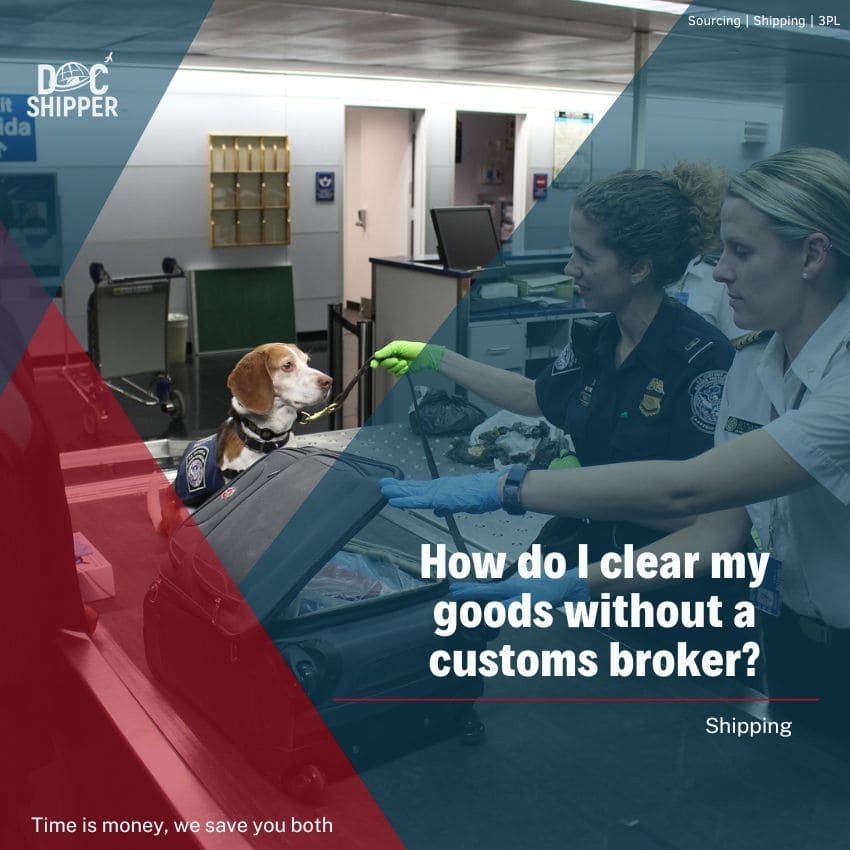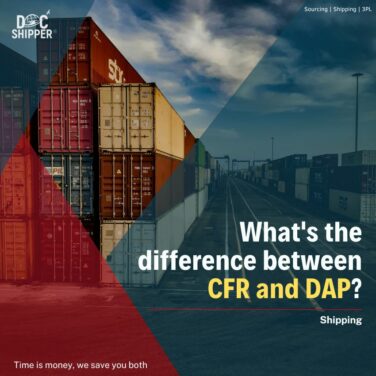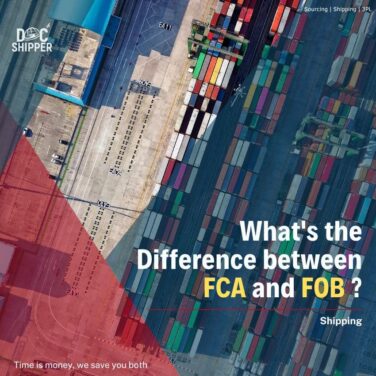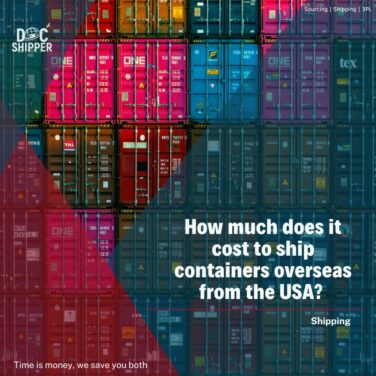When importing or exporting goods in America, one of the most important things is to understand all the tax obligations, so you can clear your goods by preparing and processing documentation according to customs regulations, laws, and procedures. These documentation procedures can be cumbersome, time-consuming, and stressful for you.
Moreover, there is documentation that has to be prepared in both the departure country and the destination country, and there is a risk that the goods will be blocked at customs. Clearing your goods when they leave or enter the USA is a legal requirement, but nothing forces you to hire a customs broker.
DocShipper Alert
DocShipper info: We are able to take charge of each step of your exports and imports, including the clearance of your goods, so you can focus on your business. The licensed customs declaration we work with permits us to provide you with a compliant service and avoid delays and extra costs. Contact us to receive a free quote in 24h. Our customer service is also available to answer all your questions. Call us now.
When do I need a customs broker?
Considering the fact that you are not an expert in customs clearance, DocShipper is here to explain it to you. Here is a clear and concise explanation of what a customs broker is and when it can be useful to call one.
The customs broker’s role
A customs broker is a professional who helps clear goods through customs on your behalf. They play important roles in facilitating the customs clearance process and ensuring compliance with customs regulations. Here is a list of the common roles of a customs broker:
- Vet your products for priority trade issues and other government agency reporting requirements.
- Review and prepare the required documents.
- Make sure they are complete and compliant, then submit them.
- Vet your products for correct classification and valuation, so duty payments are accurate.
- Advice on a range of issues that can save you time and money
Special cases: Canadian and Mexican imports/exports
As a non-expert, it can be difficult to know when you have to hire a customs broker. Following the different laws in Canada and Mexico, here are some conditions to note:
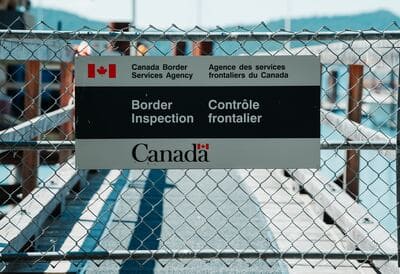
- When exporting from Canada to the USA:
If your goods value is under $800.00 USD, no formal customs clearance is required, consequently, you do not need a customs broker.
If a shipment exceeds a value of $800.00 USD, a customs broker is required. If you do not have your own customs broker, you can contact us, and you’ll have an answer in the next 24 hours.
- When importing from the USA to Canada:
If the value of your goods is under $20.00 CDN, you do not need to go through formal customs procedures, therefore, no broker is required. If the value exceeds $20, and you do not have an existing customs broker, you can contact us, and you will have an answer in the next 24 hours.
- For Mexico/U.S. Cross-Border:
A customs broker is necessary on both sides of the border. Similar to Canada, most cross-border customs brokers have operations in both Mexico and the U.S., so you will likely only have to hire one provider to cover your entire shipment’s journey.
DocShipper Alert
DocShipper info: DocShipper can assume the role of the customs broker and take charge of all the customs clearance and is present in the U.S., Canada, and Mexico. To take advantage of our services, you can achieve this form, and we’ll contact you in the next 24 hours.
How much does a customs broker charge?
If you aren’t used to working with a customs broker, you may have a lot of questions about them, including the cost. Customs brokers typically charge a fee for their services, which can vary depending on the complexity of the goods being imported and the regulations of the country where the goods are being imported. Fees may be based on a percentage of the value of the goods, a flat fee, or a combination of both.
It is important to obtain a clear understanding of the costs involved before engaging a customs broker. Most brokers begin with a base charge of about $40 and add on from there. Flat rates typically vary between $200 and $400, but prices may change based on the state of the economy. There are two types of customs bonds that brokers can arrange on behalf of their clients.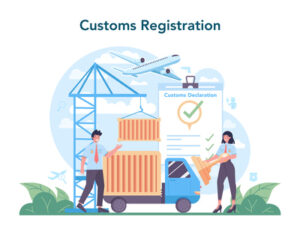
The qualities you have to find in a good customs broker
- Are they proven in the marketplace? You have to verify if they are well-known, and if they have a good reputation.
- Will they give you the attention you need? Make sure they will give enough time to your case and don’t make any mistakes, which could have a lot of consequences.
- Do they have experience in your industry? You could ask your collaborators if they know a good customs broker.
- Do they have a network and an international reach? You should verify that they can assume your imports and exports from anywhere on Earth.
DocShipper Info
DocShipper info: Thanks to our 8350 satisfied clients, 1670 collaborators, and 11 years of experience in shipping, we have all the experience required to avoid you any legal problems with your goods’ clearance. This service is included in all the services proposed by DocShipper; contact us to get a free quote.
What are the risks of clearing your goods without a customs broker?
First and foremost, clearing your goods when they arrive in or leave America is a legal requirement. You have to respect customs regulations, collect customs duties and taxes, ensure national security, and respect the norms.
Mistakes such as missing paperwork or an incorrect interpretation of free trade agreements are frequently made by people who try to clear their goods by themselves.
Certain products are subject to special regulations or stricter controls, such as food products, pharmaceuticals, chemicals, firearms, etc. Here are the main consequences of a clearance mistake:
- Financial Penalties: A clearance mistake can result in fines of up to four times the amount of duty, or 40% of the value of the goods. In the case of deliberate fraud, including false valuation, the fine may be the full value of the shipment or result in the seizure of the shipment.
- Seizure of Goods: In some cases, if the mistake or non-compliance is significant or involves prohibited or illegal goods, customs authorities may seize and confiscate the goods. A seizure can result in the loss of goods and potential legal consequences.
- Legal Consequences: Serious mistakes or intentional non-compliance with customs regulations can lead to legal consequences, including legal actions, investigations, and potential criminal charges.
- Reputational Damage: Mistakes in customs clearance can harm your reputation with customs authorities, suppliers, and customers. It may affect your credibility as a reliable importer/exporter and can impact future business relationships and opportunities.
DocShipper Info
DocShipper alert: The advantages of calling on a customs broker are to avoid delays and fines, to focus your attention on your core business and continue to increase your client’s satisfaction and to get expert advice. DocShipper can, in addition to sourcing and shipping, take charge of your clearance to avoid any mistakes. To get a free quote, complete this form.
Steps to Follow to Clear Your Goods Without a Customs Broker
When clearing your goods in America, you must follow different steps and obtain different documents. Here is a guide to follow to not forget anything:
Step 1: Prepare the documents
Commercial invoice
This document is requested by the local authorities to define the exact value of the cargo and thus determine future tax duties. A commercial invoice must indicate several points, including:
- Seller and buyer details
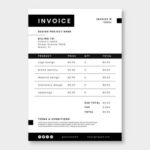
- Date and conditions of sale
- Cargo packaging
- product description
- unit and total value
- Insurance, shipping, or other charges
- Terms and conditions
Bill of Lading
The bill of lading is a very important document for your freight. The bill of lading is the equivalent of a passport and a boarding pass for your cargo. The bill of lading is specific to sea freight, as the airway bill is attached for air freight. This document is also proof of the legality of the transfer because it is issued once the carrier is paid for his services.
Certificate of origin
The certificate of origin is a document used in international logistics. Whether in paper or electronic form, the exporter fills it in with the approval of a state body that certifies the conformity of the information.
Transport documents
Depending on the mode of transportation used, you will need to provide relevant transport documents such as an Air Waybill for air transport, an Ocean Bill of Lading for sea transport, or road transport documents for land transportation.
Insurance certificate
An insurance certificate is proof of the contract between you and the organization that covers your cargo. This document justifies the price of the insurance and the conditions of the contract.
Packing list
It is an essential document for international freight (whether by sea, air, or rail). Like a commercial invoice, the packing list lists all the cargo information.
Step 2: Find the HS Code
Determine the HS Code: Find the Harmonized System (HS) code for your product. The HS code is a standardized system used to classify goods for customs purposes. It helps identify the specific category and applicable duty rates for your product. Normally, your supplier should be able to provide you with the HS Code. If not, you can still find it on your own. You can go to this U.S. government site to type in your keywords and find the HS Code that matches your keywords: hts.usitc.gov
 If you have difficulties finding your HS Code, do not hesitate to contact us, we can help you.
If you have difficulties finding your HS Code, do not hesitate to contact us, we can help you.
Step 3: Calculate the Customs Value
Calculate the Customs Value: Determine the customs value of your goods. This value typically includes the cost of the goods, transportation charges, insurance, and any other costs incurred before the goods arrive at the US port of entry. The customs value serves as the basis for calculating customs duties and taxes.
Step 4: Research duty rates
Look up the duty rates applicable to your product. On this website, you can find a database called the Harmonized Tariff Schedule provided by The United States International Trade Commission (USITC) that lists the duty rates for different HS codes.
Value-Added Tax in the USA :
There is no VAT to be paid when importing a part. However, there is a fee for processing the goods. An “MPF” (Merchandise Processing Fee) is a duty imposed by U.S. Customs and Border Protection (U.S. Customs and Border Protection or “CBP”) on most U.S. imports. The MPF is charged at 0.3456% of the value of the imported merchandise, with a minimum fee of $25 and a maximum fee of $485 for official entries.
DocShipper Tip
DocShipper Advice: It’s important to note that customs duties and taxes can vary depending on the specific product, its classification, trade agreements, and any applicable exemptions or preferential treatment. Therefore, seeking professional advice at DocShipper is a time gain and smart move. We can provide detailed information, clarify any uncertainties, and ensure compliance with customs regulations.
FAQ | How do I clear my goods without a customs broker?
It's crucial to familiarize yourself with the specific regulations and restrictions of the destination country to avoid any legal issues or complications during customs clearance. DocShipper is accustomed to these situations and can help you with this kind of issue.
DocShipper is an expert in shipping and can avoid any delays by taking charge of the clearance process.
The duration of the inspection can vary, and it's important to cooperate with the customs authorities and provide any requested information or assistance during this process. To avoid any problems, DocShipper guarantees the smooth running of your goods' clearance process.
Read more
Looking for more? These articles might interest you:
DocShipper info: Do you like our article today? For your business interest, you may like the following useful articles :
Need Help with Logistics
or Sourcing ?
First, we secure the right products from the right suppliers at the right price by managing the sourcing process from start to finish. Then, we simplify your shipping experience - from pickup to final delivery - ensuring any product, anywhere, is delivered at highly competitive prices.

Fill the Form
Prefer email? Send us your inquiry, and we’ll get back to you as soon as possible.
Contact us







